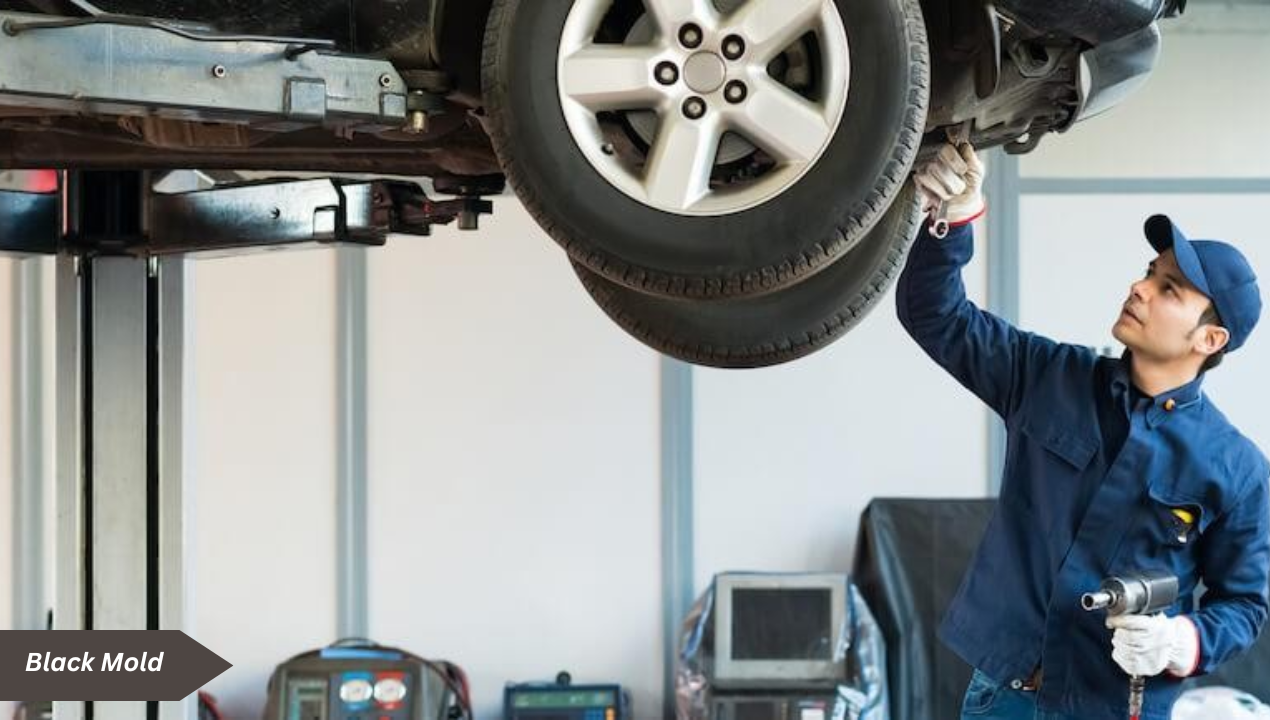Signs of Mold Presence
First things first, how do you know if mold is taking over your car? Look out for discoloration on seats, carpets, and other surfaces. Mold can appear as black, green, or white patches. If you notice a persistent musty smell, that’s another strong indicator.
Common Places for Mold Growth
Mold loves dark, damp places. In your car, it often hides in the upholstery, under seats, in the carpet, and even in the air conditioning system. Pay close attention to these spots during your inspection.
Health Risks
- Respiratory Issues
Breathing in mold spores isn’t just unpleasant; it can be downright dangerous. It can lead to respiratory problems like coughing, wheezing, and shortness of breath.
- Allergic Reactions
For those with mold allergies, exposure can trigger sneezing, runny nose, and itchy eyes. In severe cases, it can cause skin rashes and more intense reactions.
- Long-Term Health Effects
Long-term exposure to mold can have serious consequences, including chronic respiratory issues and infections, especially in people with weakened immune systems.
Preventive Measures
- Regular Cleaning and Maintenance
Keep your car clean. Regularly vacuum the interiors and wipe down surfaces to prevent mold spores from finding a home.
- Proper Ventilation
Always ensure your car is well-ventilated. Use the air conditioning system to keep the air circulating, especially during humid weather.
- Avoiding Moisture Build-Up
Never leave wet items in your car. Wet umbrellas, clothes, or shoes can create a damp environment perfect for mold growth.
Essential Tools and Materials Needed
- Cleaning Agents
For effective mold removal, you’ll need cleaning agents like white vinegar, baking soda, and commercial mold removers.
- Protective Gear
Safety first! Wear gloves, masks, and goggles to protect yourself from mold spores.
- Tools for Scrubbing and Drying
Have scrub brushes, sponges, and microfiber cloths on hand. A portable dehumidifier can also be a great asset.
Step-by-Step Guide to Removing Mold
- Preparing Your Car
Start by removing all personal items and vacuuming thoroughly to remove loose mold spores.
- Applying Cleaning Solutions
Mix a solution of white vinegar and water (1:1 ratio) and spray it generously on the moldy areas.
- Scrubbing and Wiping Down Surfaces
Use a scrub brush to work the solution into the fabric or affected areas. Wipe clean with a damp cloth.
- Drying and Dehumidifying
Once cleaned, let your car dry completely. Use a portable dehumidifier or keep the car windows open on a sunny day.
Natural Remedies for Mold Removal
- Using Vinegar
Vinegar is a natural and effective mold killer. Spray undiluted vinegar on the mold, let it sit for an hour, then wipe clean.
- Baking Soda Paste
Make a paste with baking soda and water. Apply it to moldy spots, scrub gently, and rinse with water.
- Essential Oils
Tea tree oil is known for its antifungal properties. Mix a teaspoon of tea tree oil with a cup of water, spray it on the mold, and leave it to dry.
Commercial Products for Mold Removal
- Mold Removal Sprays
There are many mold removal sprays available that are specifically designed for use in cars. Follow the instructions on the label for best results.
- Upholstery Cleaners
Use specialized upholstery cleaners for fabric seats and carpets to effectively remove mold.
- Dehumidifiers
Investing in a car dehumidifier can help maintain a dry environment, preventing mold from reoccurring.
Deep Cleaning Car Interiors
- Cleaning Carpets and Floor Mats
Remove the carpets and floor mats, scrub them with a mold removal solution, rinse thoroughly, and let them dry completely.
- Upholstery and Seat Cleaning
For fabric seats, use an upholstery cleaner. For leather, use a leather cleaner and conditioner to prevent damage.
- Dashboard and Console
Don’t forget to clean hard surfaces like the dashboard and console. Use a disinfectant wipe or a mild cleaning solution.
Cleaning Car Air Conditioning System
- Replacing the Cabin Air Filter
A clogged air filter can harbor mold spores. Replace it regularly to ensure clean air circulation.
- Disinfecting Vents and Ducts
Use an air conditioner cleaner spray to disinfect the vents and ducts, eliminating mold spores.
Dealing with Persistent Mold
- When to Call a Professional
If mold persists despite your best efforts, it might be time to call in a professional. They have specialized tools and knowledge to handle severe mold infestations.
- Persistent Mold Solutions
Professionals can use ozone treatments or deep-cleaning techniques that go beyond regular cleaning.
Post-Cleaning Care
- Regular Maintenance Tips
Keep your car clean and dry. Regularly vacuum and wipe down surfaces to prevent mold from coming back.
- Monitoring for Mold Recurrence
Stay vigilant. Regularly check common mold spots and take immediate action if you notice any signs of mold.
FAQs
Can Mold in a Car Make You Sick?
Yes, mold can cause various health issues, including respiratory problems and allergic reactions.
How Long Does It Take to Remove Mold?
The time it takes depends on the severity of the infestation, but a thorough cleaning can usually be completed in a few hours.
Is It Safe to Use Bleach in Car Mold Removal?
While bleach can kill mold, it’s not recommended for use on fabrics or upholstery as it can cause discoloration and damage.
What Should I Do if the Mold Comes Back?
If mold returns, re-clean the affected areas and consider using a dehumidifier to keep moisture levels low.
Are There Professional Services for Car Mold Removal?
Yes, many detailing and cleaning services specialize in mold removal and can handle severe infestations.
Conclusion
Removing mold from your car might seem like a daunting task, but with the right tools and techniques, you can do it effectively. Remember, prevention is key. Keep your car clean, dry, and well-ventilated to avoid future mold problems. Stay proactive and enjoy a clean, fresh-smelling car!
